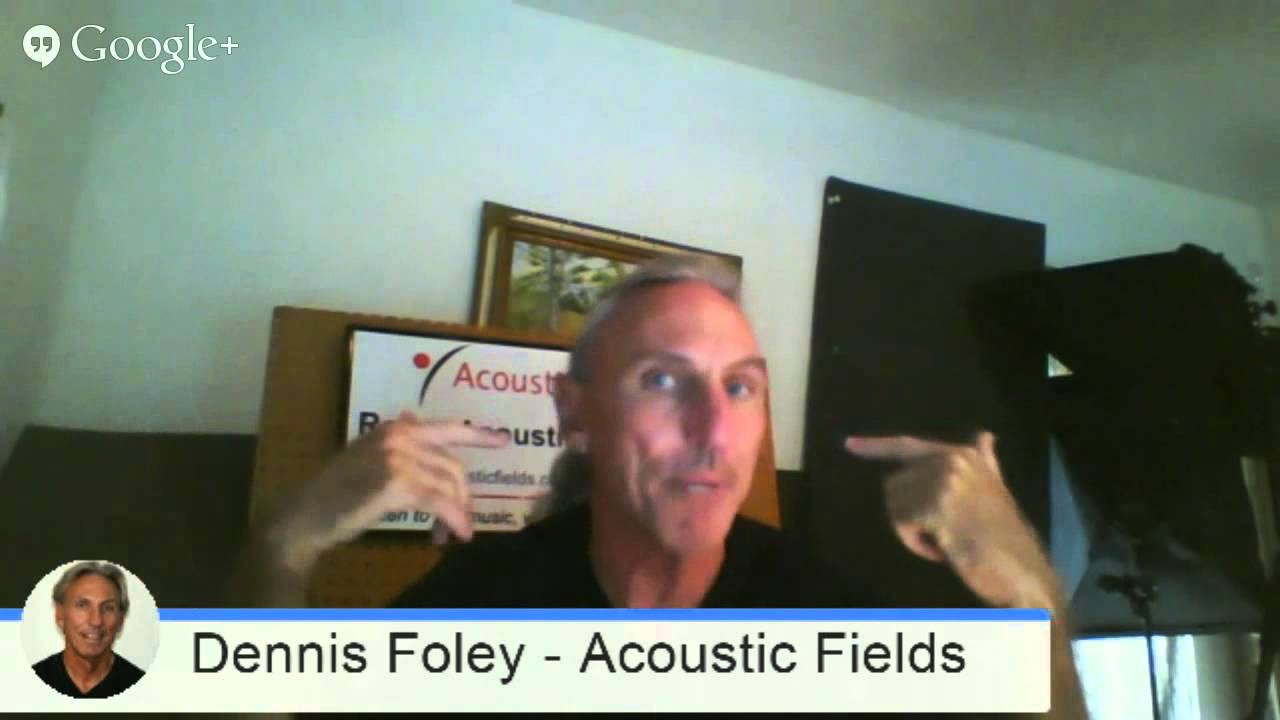In a recent Google Hangout I was posed a question by a Youtube subscriber called Glowing Lights Official in which he basically asked “Would you recommend buying any bass traps at all? Would it be better to focus on absorbing higher frequencies and attempt to make some DIY bass energy absorption units to maybe at least get rid of the problems in the air around 250 to 500 hertz? I think having two walls with thick layers of glass wall and adding a bookshelf as well as other high or mid frequency absorbers would do the trick in my situation. If you have these thick pieces of very dense material these should absorb higher frequencies too, right?”
Dennis: Well a lot of issues going on in this comment and question and a lot of assumptions. The first thing that you have to do in almost any room is manage the low-end because going after the high-end and the middle first and not managing the low-end is just not good business. Because here’s what happens, if you don’t treat the low-end, the low-end has the largest impact on the pressure variations in the room, it also has the biggest acoustical impact meaning more room sound, less mix sound.
So you have to get the low frequency energy in the room managed and that said, once you do that, then the middles and highs become more apparent because they’re sometimes covered by the low frequencies. There’s really big overlaps. If you take low frequency at a hundred cycles and less, that can bleed from hundred cycles to 200 cycles and start at the bottom of the mix and you manage the pressure in the low-end you get rid of that bleed so that frequency, middle frequency boom is free now to be heard.
So you’ve got to start with the low-end unless you have a really large room which most people don’t. So you have to manage the low-end then you have to manage the reflections and the reverberation time. But don’t guess. Now he mentions fabric. Well “if we put some fabric out there it should absorb at 250 cycles”, you don’t know that and you can’t guess at that because that’s not a good idea. You want to know what frequencies anything you put in the room absorbs at because you’ve got to know how to adjust the rates and levels of that absorption to achieve what you need in the room.
Manage the energy
There’s been a lot of talk out there about ‘Oh just absorb as much as you can’… I couldn’t disagree more. You do not have to absorb a hundred percent of anything to manage it. If you do, you lose that energy forever. A hundred percent absorption means a hundred percent conversion to heat, so it’s an energy change, you lose that energy. You don’t have to lose energy in order to manage it, that’s a lazy way of doing things.
Find the rate and level that’s more appropriate for what you’re trying to accomplish in the room. This is the reason for our foam. Everybody has foam but nobody has our rates and levels. Why is that? Those rates and levels were developed from measuring over 250 rooms; conference rooms, just for voice then later for music. So I know that a different curve gets you better voice and that’s the curve reflected in our foam.
So you’ve really got to know rates and levels. Throwing up fabric, throwing up blankets and drapes, things like that, they’re not predictable, they’re not consistent, you can’t measure them and good quality sound in a room is a combination of a lot of little things done correctly. If you have a wall covered with some kind of material and you don’t know how much it’s absorbing at what frequency, then that’s not good. You have to know every surface, you have to know what it’s doing, how much it’s doing, at what frequencies it’s doing it at. Because you need that predictability and consistency so that you can tune the room and speaking of room tunings we should do a Google chat on Chris’ room in Canada.
A great room: 19-foot wide, 14-foot tall and 50-foot long. He’s got two 2-channel systems interrelated and time-aligned. So he has two speakers in the back of the room and two more towards the front of the room and he has them time-aligned. I have no idea what that sounds like but we should do a video on his room. He’s installing our foam in his ceiling and the ceiling system I designed for him. It’s really great to hear this guy say “Oh my God I’m hearing things I never heard before” and you know what he had on his walls when we started working with him: old blankets.
In Summary
I hope this discussion helped. Feel free to contact me directly at: 520 – 392 – 9486 MST or info@acousticfields.com. If you would like to learn more about room acoustics please sign up for my free videos and ebook by joining the mailing list here. And if you would like your room acoustic issues analysed for free by me then please fill in the form here and I will be happy to take a look for you.
Thanks and speak soon
Dennis







